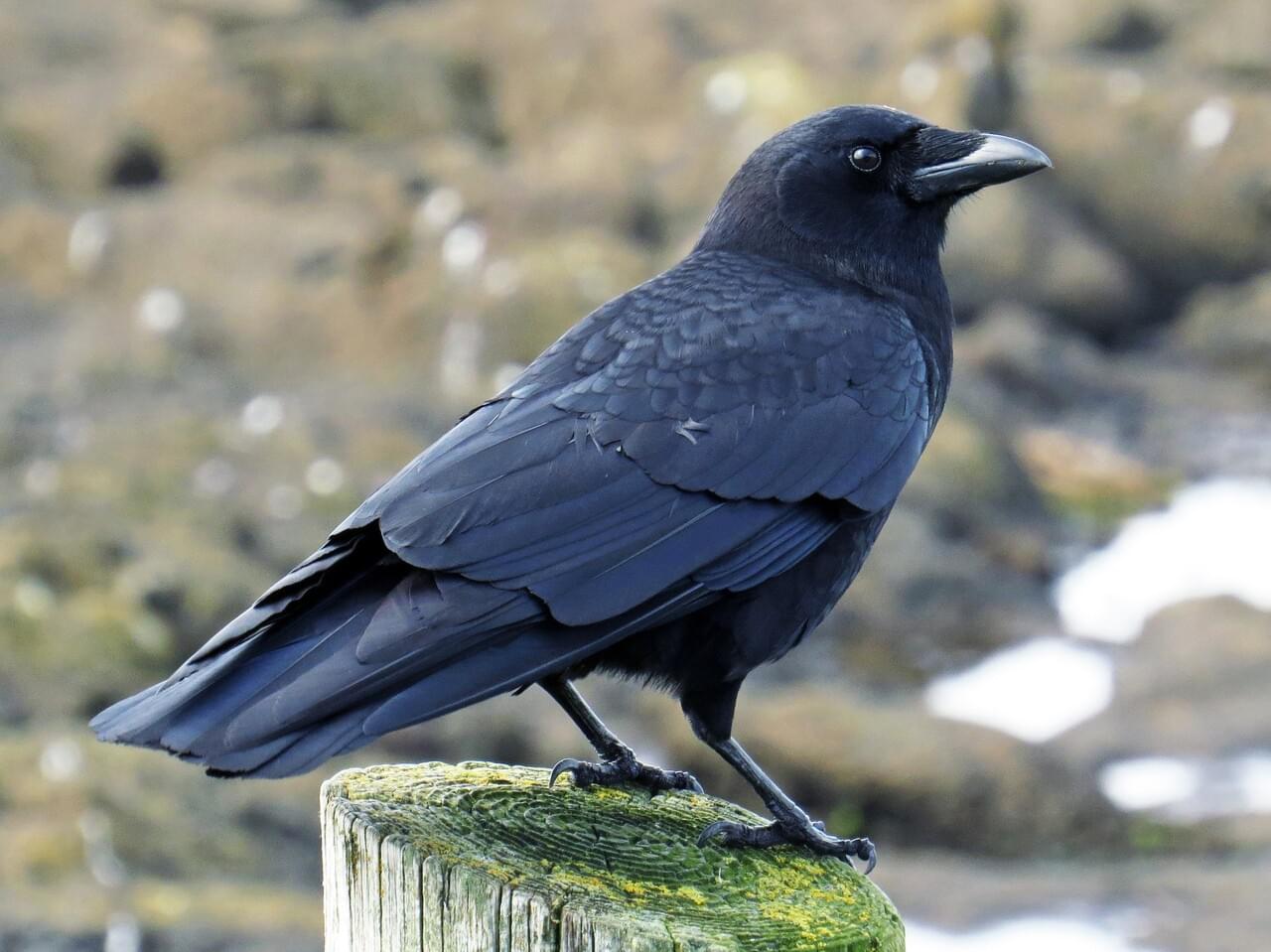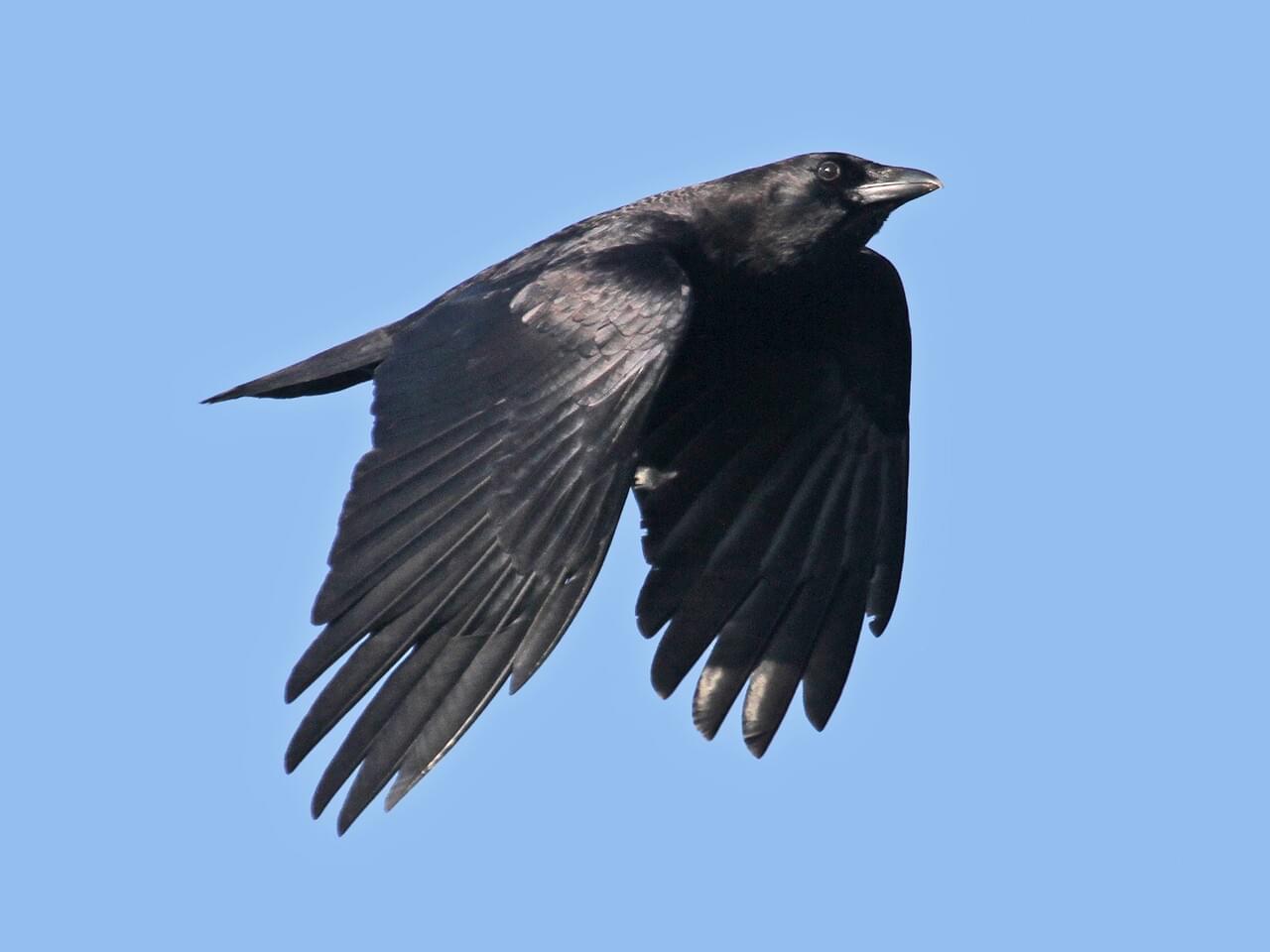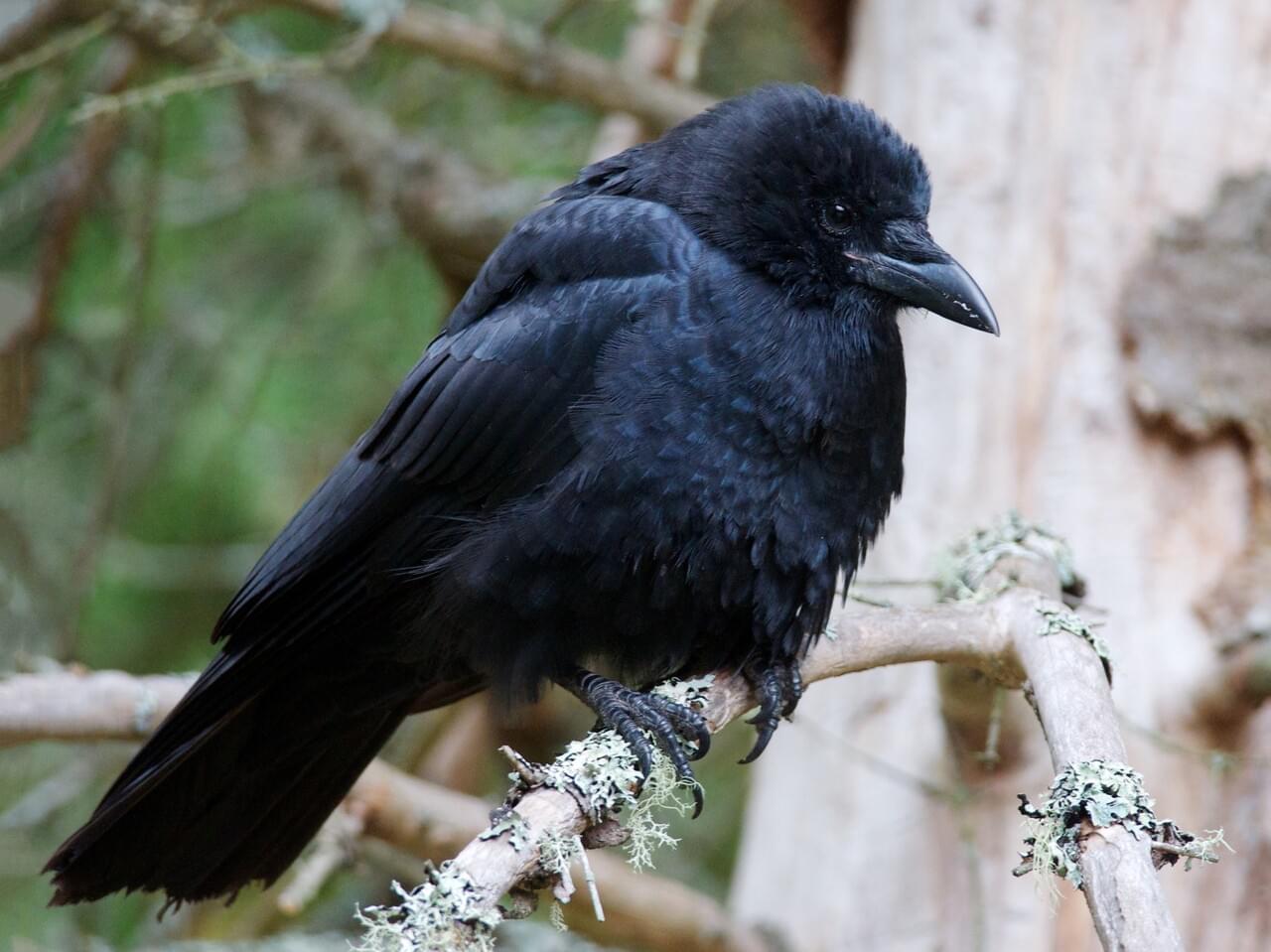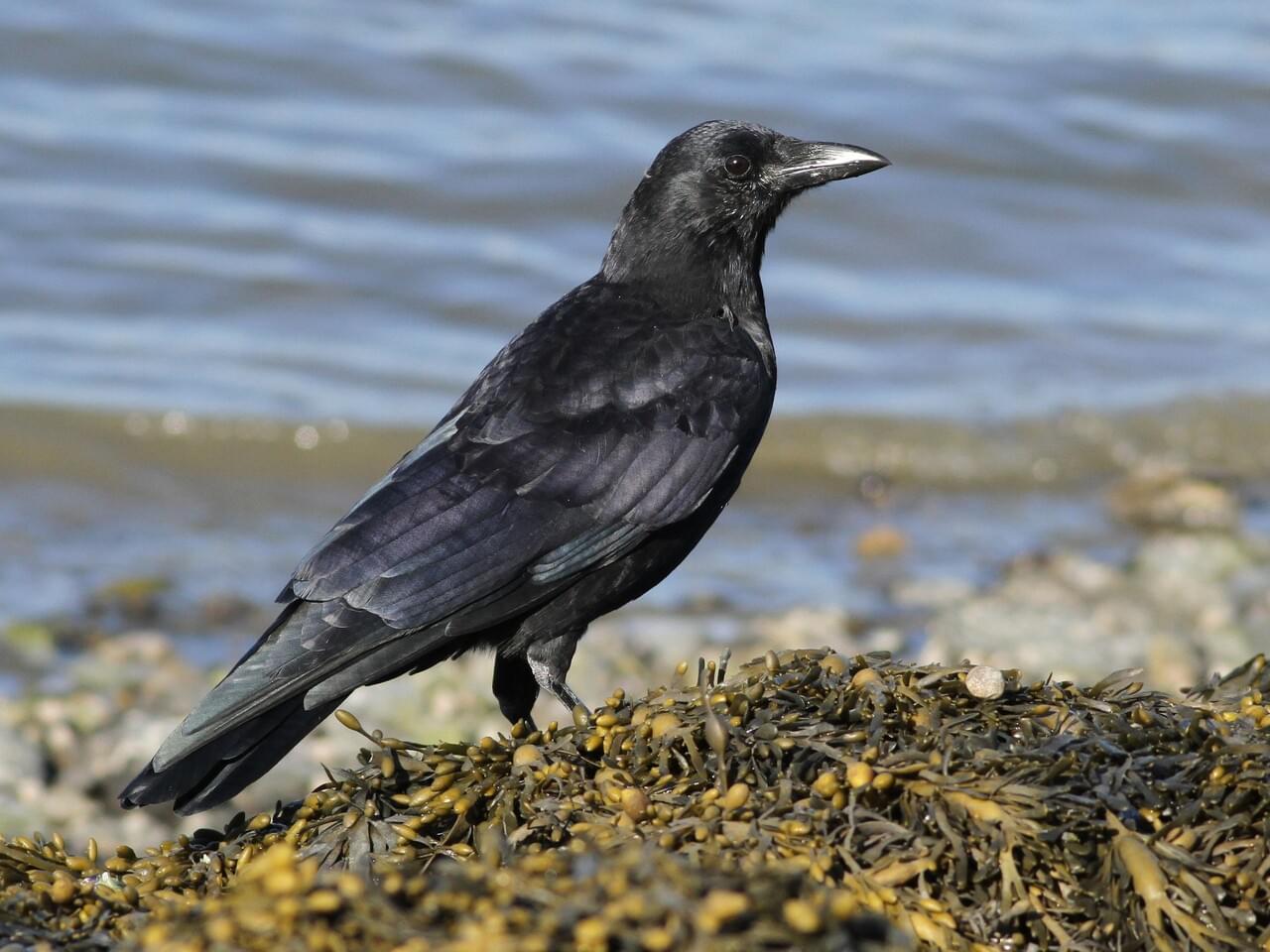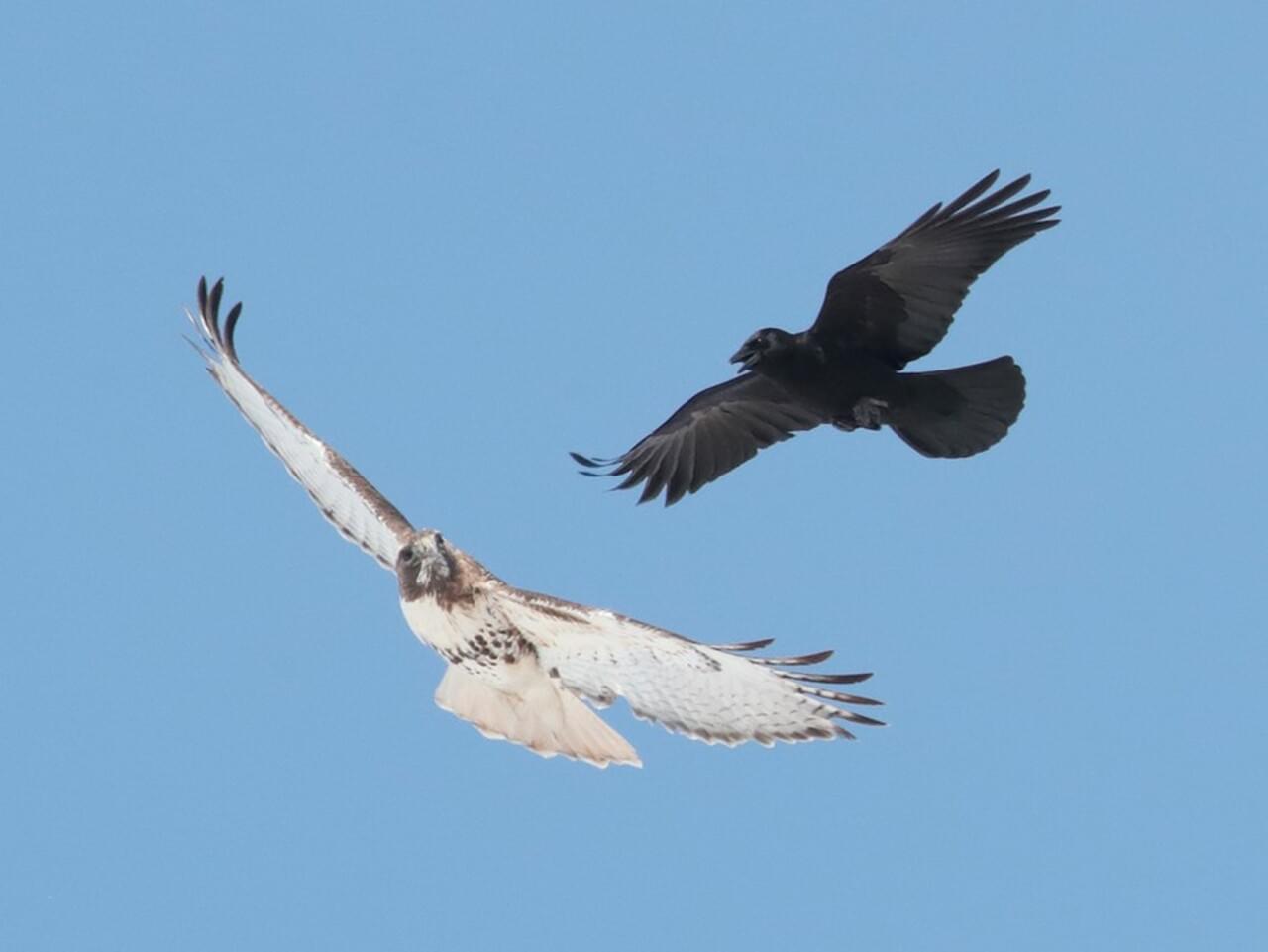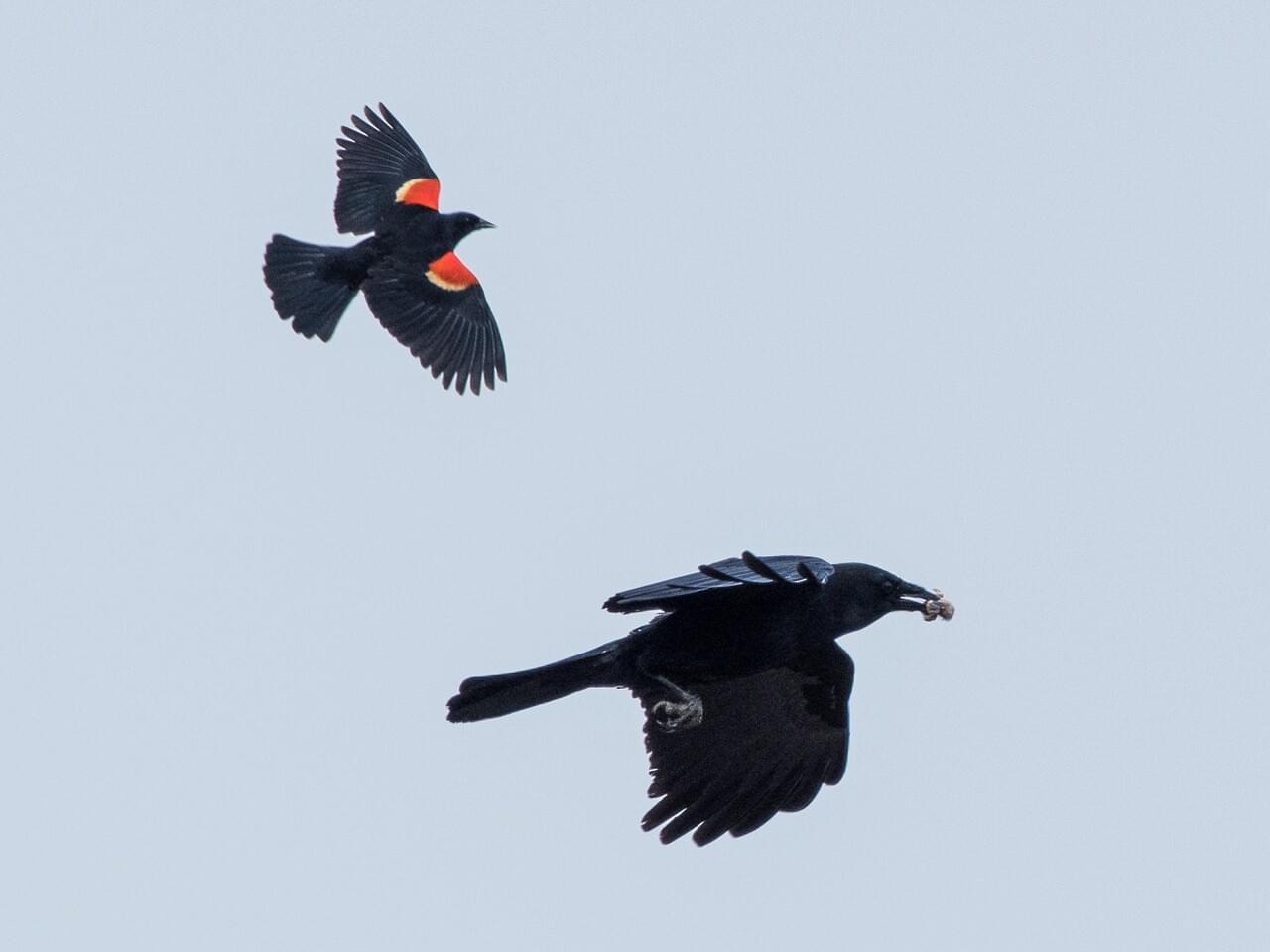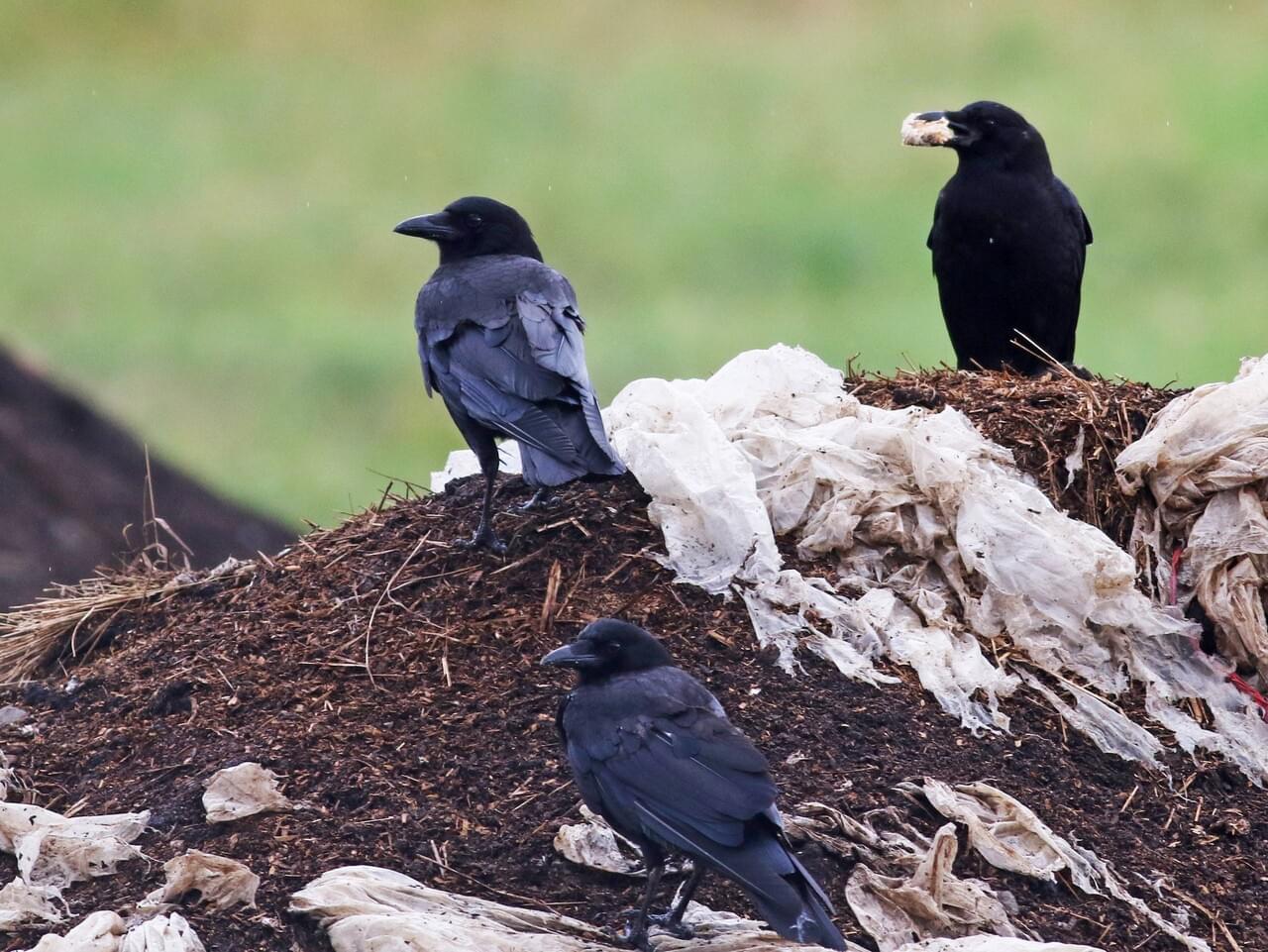 Photo ©
Liz Clayton Fuller
Photo ©
Liz Clayton Fuller
American Crow
Main Focal Species
American Crows are familiar over much of the continent: large, intelligent, all-black birds with hoarse, cawing voices. They are common sights in treetops, fields, and roadsides, and in habitats ranging from open woods and empty beaches to town centers. They usually feed on the ground and eat almost anything—typically earthworms, insects and other small animals, seeds, and fruit; also garbage, carrion, and chicks they rob from nests. Their flight style is unique, a patient, methodical flapping that is rarely broken up with glides.
Range
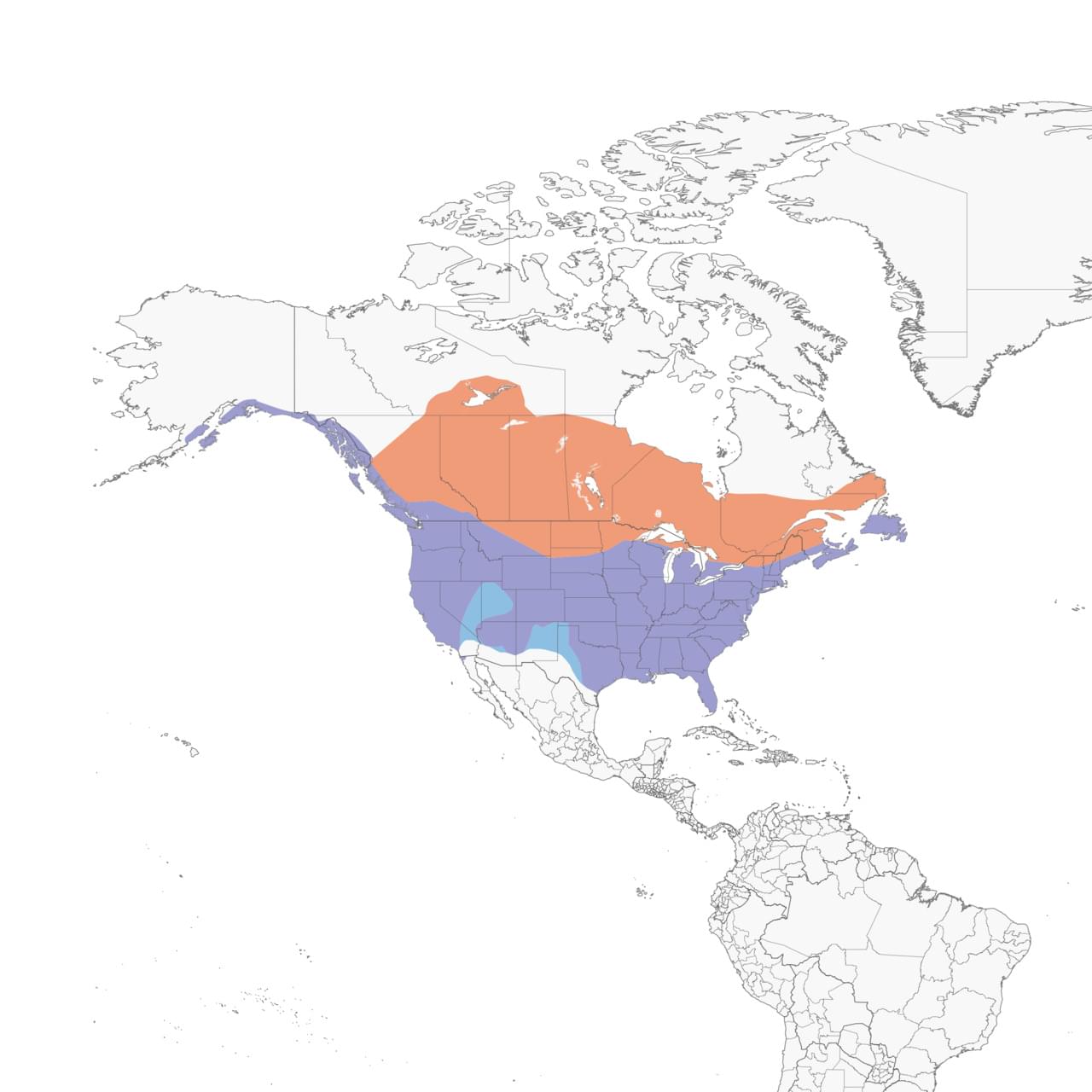
Habitat
American Crows are highly adaptable and will live in any open place that offers a few trees to perch in and a reliable source of food. Regularly uses both natural and human created habitats, including farmland, pasture, landfills, city parks, golf courses, cemeteries, yards, vacant lots, highway turnarounds, feedlots, and the shores of rivers, streams, marshes, and beaches. Crows tend to avoid unbroken expanses of forest, but do show up at forest campgrounds and travel into forests along roads and rivers. Avoids deserts.
Food
American Crows eat a vast array of foods, including grains, seeds, nuts, fruits, berries, and many kinds of small animals such as earthworms and mice. They eat many insects, including some crop pests, and also eat aquatic animals such as fish, young turtles, crayfish, mussels, and clams. A frequent nest predator, the American Crow eats the eggs and nestlings of many species including sparrows, robins, jays, terns, loons, and eiders. Also eats carrion and garbage.
Behavior
American Crows are highly social birds, more often seen in groups than alone. In addition to roosting and foraging in numbers, crows often stay together in year-round family groups that consist of the breeding pair and offspring from the past two years. The whole family cooperates to raise young. Winter roosts of American Crows sometimes number in the hundreds of thousands. Often admired for their intelligence, American Crows can work together, devise solutions to problems, and recognize unusual sources of food. Some people regard this resourcefulness and sociality as an annoyance when it leads to large flocks around dumpsters, landfills, and roosting sites; others are fascinated by it. American Crows work together to harass or drive off predators, a behavior known as mobbing.
Nesting
Both members of a breeding pair help build the nest. Young birds from the previous year sometimes help as well. The nest is made largely of medium-sized twigs with an inner cup lined with pine needles, weeds, soft bark, or animal hair. Nest size is quite variable, typically 6-19 inches across, with an inner cup about 6-14 inches across and 4-15 inches deep.
Appearance
Typical Sound

© Mike Andersen / Macaulay Library
Size & Shape
A large, long-legged, thick-necked bird with a heavy, straight bill. In flight, the wings are fairly broad and rounded with the wingtip feathers spread like fingers. The short tail is rounded or squared off at the end.
Color Pattern
American Crows are all black, even the legs and bill. When crows molt, the old feathers can appear brownish or scaly compared to the glossy new feathers.
Plumage Photos
Similar Species
The American Crow is nearly identical to both Northwestern and Fish crows. To distinguish Fish Crows, check range maps and listen for the Fish Crow's more nasal calls. Northwestern Crows occur only along the Pacific Northwest coast; they are slightly smaller and best separated by habitat. Common Ravens are larger, longer winged, and heavier beaked than crows. Ravens' tails are tapered at the end, giving them a diamond or wedge shape compared to a crow's shorter, squarer tail.
Did you know?!
- To eat road kill, crows have to wait for something else to tear open the body or for the body to decompose and soften, since a crow’s beak isn’t usually strong enough to tear open the dead animal’s skin.
- Young crows may stay with their parents for years until they can find a home of their own. The young crows help their parents guard their territories and raise new young.
